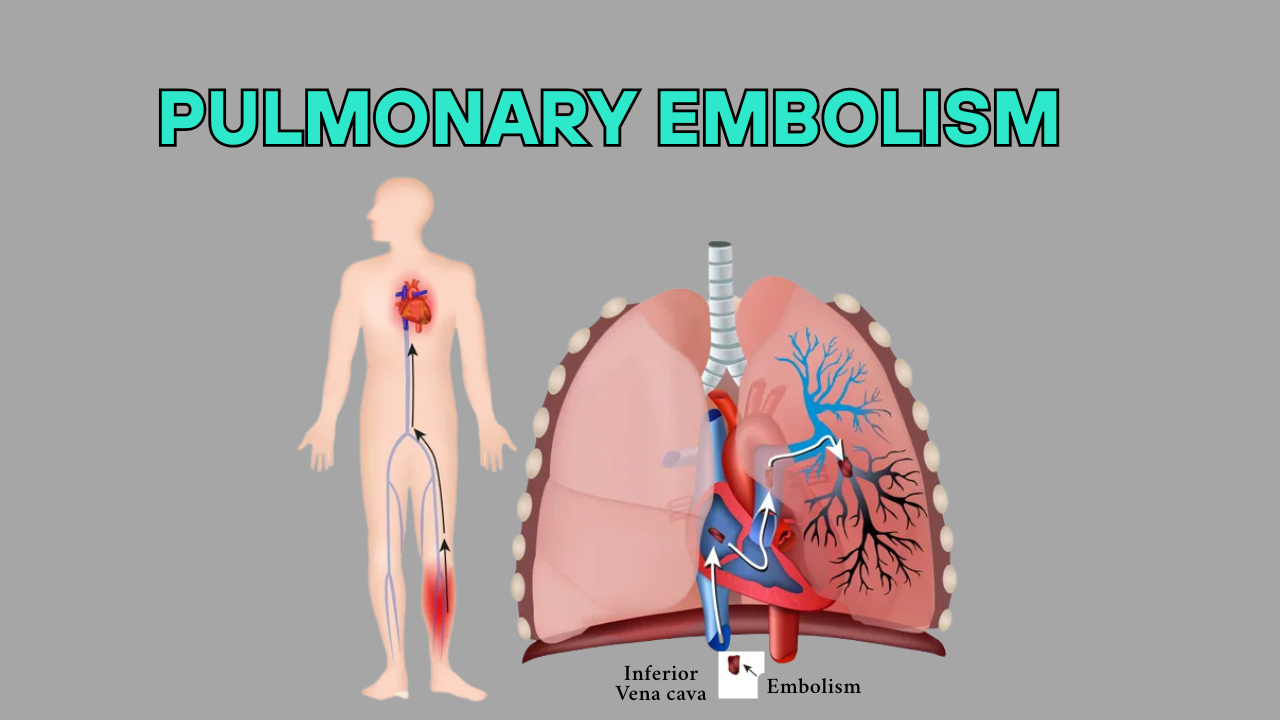- everything you need to know about -
Pulmonary Embolism
watch a
video

- HEALTH & WELLNESS-
Pulmonary
Embolism
When we think of serious health conditions, we often focus on heart attacks or strokes. But there’s another silent, dangerous threat that can strike without much warning — pulmonary embolism, or in simpler terms, a blood clot in the lungs.
This condition affects thousands of people each year, often with symptoms that are mistaken for less serious issues like anxiety, muscle strain, or even the flu. Understanding what a pulmonary embolism is, how it feels, and when to seek help could save your life — or someone else’s.
🔍 What Is a Pulmonary Embolism?
A pulmonary embolism (PE) happens when a blood clot travels to your lungs and blocks blood flow. Most clots start in the deep veins of the legs — a condition called deep vein thrombosis (DVT) — and travel upward.
When that clot gets lodged in the lungs, it can stop oxygen from flowing properly, putting severe stress on the heart and lungs. If not treated quickly, it can be life-threatening.
⚠️ Early Signs You Shouldn’t Ignore
One of the most alarming things about PE is that its symptoms often look like other conditions. That’s why it’s so important to recognize the signs. Here’s what to watch for:
Sudden shortness of breath (even at rest)
Sharp chest pain when breathing deeply or coughing
Rapid heart rate or irregular heartbeat
Coughing up blood (in severe cases)
Feeling lightheaded or faint
Sudden leg swelling, especially in one leg
Warmth, redness, or pain in the calf
If you notice these signs — especially after surgery, long travel, or periods of immobility — seek emergency care immediately.
🧠 What Causes Blood Clots in the Lungs?
A pulmonary embolism usually stems from poor circulation, often caused by:
Extended periods of sitting (e.g., long flights or car rides)
Recent surgery, especially hip or knee replacement
Pregnancy or recent childbirth
Smoking
Certain medications (like birth control pills)
Obesity
Genetic clotting disorders
Even healthy individuals can develop blood clots after an injury or long period of inactivity. That’s why awareness matters.
🩺 How Is Pulmonary Embolism Diagnosed?
If you go to the ER with chest pain or breathing problems, your doctor may suspect PE based on your symptoms and risk factors.
Here’s how they usually confirm the diagnosis:
Blood tests (D-dimer) to check for clotting activity
CT pulmonary angiography – a detailed scan of the lungs
Ultrasound of the legs to check for DVT
Chest X-ray or ECG to rule out other issues
Quick diagnosis is critical. A delay can make treatment harder or even lead to sudden death.
💊 Treatment Options
Treating a pulmonary embolism depends on the severity, but the goal is always to prevent the clot from getting bigger — and stop new ones from forming.
Anticoagulants (blood thinners) – often taken for 3 to 6 months
Thrombolytics – “clot-busting” drugs used in emergency cases
Surgery – in rare, severe situations
IVC filter – placed in the vein to catch future clots if blood thinners aren’t an option
With proper treatment, most people recover fully. But lifelong follow-up may be needed to prevent recurrence.
🧘♀️ How to Prevent Pulmonary Embolism
The best way to deal with PE is to prevent it before it happens. Here are some proven ways to lower your risk:
Move frequently, especially during long travel
Drink plenty of water to stay hydrated
Avoid smoking
Stay active and maintain a healthy weight
Wear compression stockings if you’re at risk
Follow post-surgery care instructions carefully
Discuss medication risks with your doctor (especially hormonal meds)
If you’ve had a clot before or have a family history, talk to your healthcare provider about personalized prevention strategies.
❤️ Final Thoughts: Take Your Symptoms Seriously
A pulmonary embolism is a medical emergency, not something to wait out or “see if it goes away.” Listening to your body is the best defense you have. If something feels off — like unexplained shortness of breath or chest pain when breathing — don’t brush it off.
Getting help early could make all the difference. Share this information with loved ones and stay aware, because sometimes a little knowledge really can save a life.
